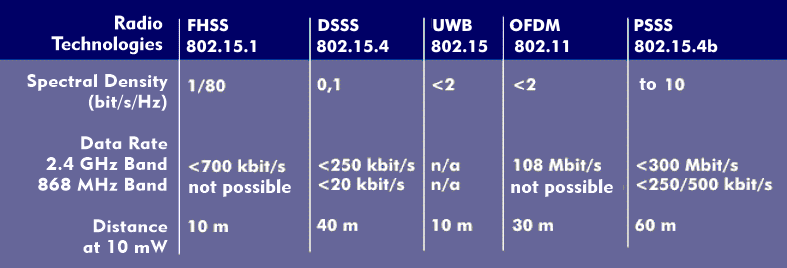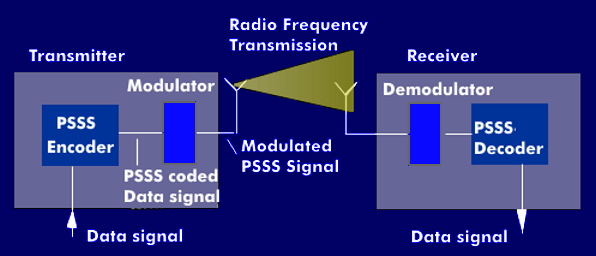parallel sequence spread spectrum (802.15.4b) (PSSS)
The Parallel Sequence Spread Spectrum (PSSS) radio technology is based on the spread spectrum technique, whereby several cyclically shifted spread sequences are superimposed.
The PSSS technique has a high spectral density, a factor of ten or more higher than that of the classical spread spectrum technique. In addition, the technique has high resistance to multipath propagation, which pays off in in-house applications, and better energy efficiency, which leads to longer sensor batterylife in wireless sensor networks. In this area, the PSSS method, which is part of the b version of the 802.15.4 standard, is used.
PSSS can be combined with virtually any other modulation technique: ultra-wideband( UWB), orthogonal frequency division multiplex( OFDM), double-sideband modulation, quadrature amplitude mod ulation( QAM), or others. Before transmission, the data is encoded in a PSSS coder and subsequently modulated for radio transmission. At the receiving end, the modulated radio signals are demodulated and converted back to data in a PSSS decoder.
There are different PSSS classes, which are determined by the sequence length and which determine the resistance to multipath signals. The highest PSSS class operates with a sequence length of 31 and is totally insensitive to multipath propagation. In conjunction with certain modulation methods, distances of up to 100 m can be bridged with this PSSS class.


